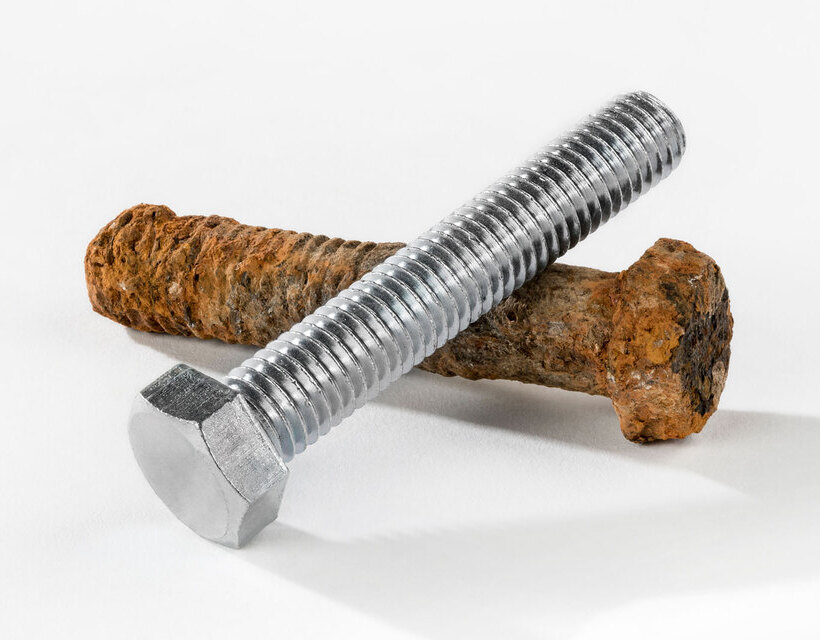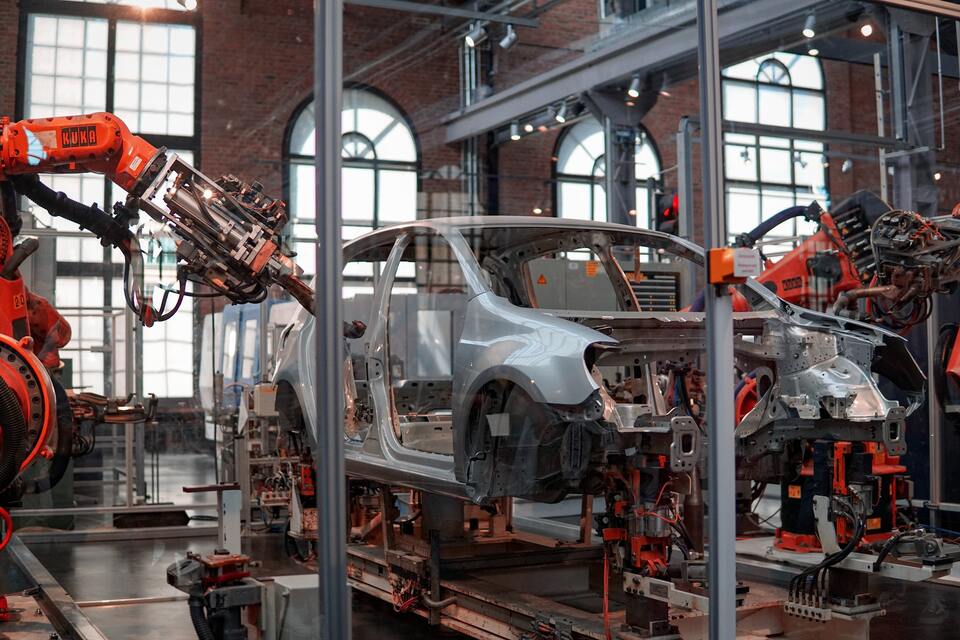If you're like me, you probably have a lot of questions about stainless steel and its role in the automotive industry. It's a material that seems to be everywhere these days, from car parts to kitchen appliances. But what exactly is it, and why is it so important for cars?
In this article, I'm going to give you an overview of everything you need to know about stainless steel and its applications in the automotive industry. You'll learn how this versatile material is produced, what its properties are, and how it can benefit your car. Plus, I'll also discuss some of the challenges associated with using stainless steel in cars.
By the end of this article, you'll have a better understanding of why stainless steel has become such an integral part of modern vehicles. So let's dive in!
What Is Stainless Steel?
I'm sure you've heard of stainless steel before, but do you know exactly what it is and what role it plays in the automotive industry? Let's dig in and answer those questions together.
Stainless steel is an alloy composed of iron, chromium, and other elements like nickel and molybdenum. What makes this metal so desirable is its corrosion resistance properties. It's why it's not only used in the automotive industry, but also for things like kitchen appliances, medical equipment, and even skyscrapers!
In the auto industry specifically, stainless steel is used to make exhaust pipes, mufflers, tailpipes as well as components that need to be especially strong or heat resistant. The metal can withstand a variety of temperatures which makes it perfect for these parts that get hot during operation.
In summary, stainless steel is an alloy composed of iron and other metals that makes it corrosion-resistant and great for use in the automotive industry for components needing strength or heat resistance.
Manufacturing Processes

Manufacturing processes for stainless steel are important in the automotive industry, as it's an integral part of car construction. It has been used since the early 1900s to make parts such as exhaust systems and wheel covers.
Heat treatments and welding techniques play a major role in its production. Heat treatments are used to strengthen the metal and create different types of steel with various characteristics. This allows the manufacturer to tailor their product to their needs. Welding techniques also allow for complex shapes to be created which adds strength, increases durability, and reduces weight - all key elements when designing a car that performs well yet is reliable enough for daily use.
The importance of stainless steel in the automotive industry cannot be overstated, as it provides strength and durability while still being lightweight enough to ensure maximum performance. Its ability to withstand extreme temperatures makes it ideal for components that require heat resistance such as exhaust systems. Its corrosion resistance helps protect against rust which can weaken components over time and cause them to fail unexpectedly.
With so many advantages, there's no doubt why stainless steel has become one of the most widely used materials in vehicle construction today.
Properties And Benefits
I'm sure many of us have heard of stainless steel, but what exactly is it?
It's a type of steel alloy that contains chromium and other elements which gives it a unique set of properties, including corrosion resistance, durability, and strength.
These properties make stainless steel an ideal choice for use in the automotive industry, especially when it comes to components that are exposed to the elements.
Its corrosion resistance means that it can withstand harsh weather conditions and won't rust or corrode easily.
Its strength and durability make it an ideal material for components like engine blocks, exhaust systems, and more.
The fact that it's easy to maintain and clean also makes it a great choice for automotive applications.
Overall, stainless steel is a great choice for the automotive industry due to its corrosion resistance, durability, and strength.
Corrosion Resistance

When it comes to rust prevention, stainless steel has a huge advantage. This is because it contains alloying elements like chromium and nickel that form an invisible layer of chromium oxide on the surface of the metal.
This layer prevents any oxygen or water from coming into contact with the actual steel, meaning no rust can form. It's this corrosion resistance that has made stainless steel so popular in automotive industry and other industries alike.
In addition, its strength means it can be used to create durable parts and components that won't corrode easily, which is why it's often found on exhaust systems, fuel tanks and brake calipers. And thanks to its shiny finish, it helps give vehicles a sleek look that makes them stand out from the crowd.
Durability
Durability is another great property that stainless steel offers.
Thanks to its corrosion resistance and heat tolerance, it's able to withstand tough conditions and last a long time.
This makes it the perfect material for automotive use, as it won't corrode easily or require frequent replacement.
Plus, the shiny finish helps give cars a sleek look that will turn heads wherever you go.
It's no wonder why stainless steel has become such a popular choice for so many industries!
Strength
Strength is another important property of stainless steel that makes it ideal for so many applications. Not only is it corrosion-resistant, but its thermal resistance and strength make it an exceptionally strong material, perfect for applications that require a lot of durability.
It won't easily rust or wear away, making it a reliable choice when you need something to last for years. Plus, its strength allows us to make thinner parts with the same amount of durability as thicker ones. That means designers can create lighter components and products without sacrificing on quality.
It's no wonder stainless steel has become such a popular choice in so many industries!
Automotive Applications

Stainless steel has become a go-to material for automotive applications due to its unbeatable combination of durability and cost efficiency.
As its name implies, stainless steel is renowned for its resistance to corrosion and rust - making it the perfect choice for parts that are exposed to the elements.
It's also incredibly lightweight yet strong, which helps contribute to fuel efficiency and performance.
Now let's dig into how these properties translate into the automotive industry.
Firstly, corrosion protection is an important factor in any car – from exterior body panels to interior components such as seat frames.
Stainless steel can provide this protection without breaking the bank, making it a great option for cost analysis when selecting materials.
Additionally, stainless steel can be used in areas where traditional materials may not hold up – like engine parts subjected to extreme temperatures and exposure to chemicals.
This type of flexibility makes stainless steel an even more attractive choice for automakers looking to maximize their investment.
Challenges Of Using Stainless Steel
Using stainless steel in the automotive industry has its advantages, but there are also some challenges that come with it.
One of the biggest is cost effectiveness. The initial cost of using stainless steel is higher than other standard materials, like carbon steels and aluminum alloys. This can be a big challenge for auto manufacturers who want to keep their costs low while still producing quality vehicles.
Another challenge with stainless steel is corrosion resistance. While stainless steel does have a high level of resistance to wear and tear, it can be affected by the environment around it, particularly moisture and saltwater environments. This means that regular maintenance needs to be done to make sure that the material does not corrode or rust away over time.
Here are three reasons why stainless steel is still used despite these challenges:
- It has a good strength-to-weight ratio, making it easy to use in certain applications without compromising on structural integrity
- Its ability to be recycled easily and reused makes it an environmentally friendly choice
- It has superior corrosion resistance compared to other materials, meaning it can last much longer in certain environments
Despite these challenges, using stainless steel in the automotive industry remains advantageous due to its strength-to-weight ratio, recyclability and corrosion resistance properties. Additionally, proper maintenance can help ensure that the material lasts for many years without suffering from any wear and tear or corrosion damage.
The Future Of Stainless Steel In Automotive
As we look to the future of stainless steel in automotive, it's clear that this metal alloy is here to stay. It offers an array of rust-resistant and eco-friendly solutions for car manufacturers, making it an invaluable tool.
The idea that stainless steel might be phased out in favor of a new material may be tempting for some, but its advantages are too great to ignore. Take corrosion resistance for example; stainless steel remains one of the most durable materials available to auto engineers today. This means that parts made from this alloy will last longer and require less maintenance than alternatives.
Plus, with the growing demand for more eco friendly applications, stainless steel provides a great solution because it is extremely recyclable and doesn't contain any hazardous substances or compounds. All these factors make stainless steel a reliable option for car makers looking to build vehicles with improved longevity and efficiency.
Conclusion
In conclusion, stainless steel has proven to be an invaluable metal in the automotive industry. It provides a perfect balance of strength and durability, making it an ideal choice for a variety of applications.
Furthermore, its ability to resist corrosion makes it a great option for use in harsh automotive environments. Despite the challenges posed by using stainless steel, its future looks bright as more and more auto makers are taking advantage of its properties and benefits.
Think of stainless steel as your trusty steed that carries you through rough terrain without fail. Its reliable strengths provide support when you need it most and its durable nature ensures that your journey will be safe and sound.
With stainless steel as your companion, there's no telling how far you'll go or what adventures you'll experience!
